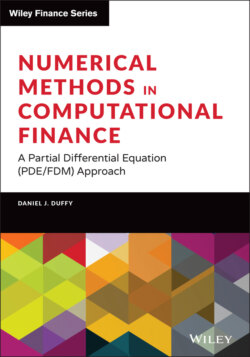Читать книгу Numerical Methods in Computational Finance - Daniel J. Duffy - Страница 15
1.2 CONTINUOUS FUNCTIONS
ОглавлениеIn this section we are mainly concerned with real-valued functions of a real variable, that is . In rough terms, a continuous function is one that can be drawn by hand without taking the pen from paper. In other words, a continuous function does not have jumps or breaks, but it is allowed to have sharp bends and kinks. Examples of continuous functions are:
We can see that these functions are continuous just by drawing them. The first function is ‘smoother’ than the second function, the latter being similar to a one-factor call or put payoff on the one hand and a Rectified Linear Unit (ReLU) activation function on the other hand (Goodfellow, Bengio and Courville (2016)). Intuitively, a function f is continuous if when , no matter how x approaches p. Alternatively, small changes in x lead to small changes in .
If we formally differentiate the above ReLU function (1.1), we get the famous discontinuous Heaviside function:
A discontinuous function is one that is not continuous. Another discontinuous function is:
Define ; let (integer).
Then taking left and right limits gives different answers, showing that the function is not continuous.
1
2
Thus .
